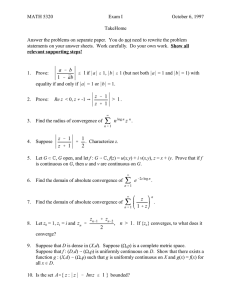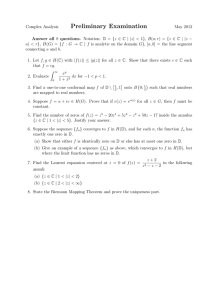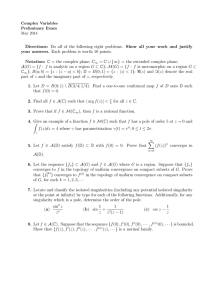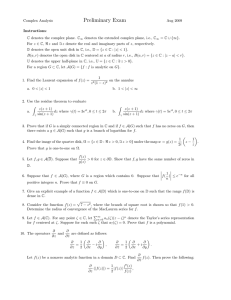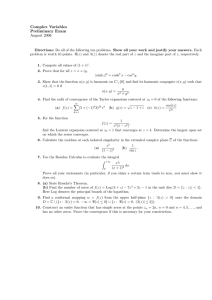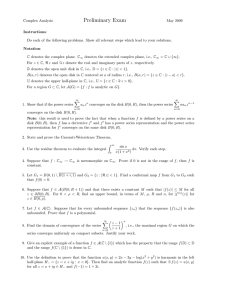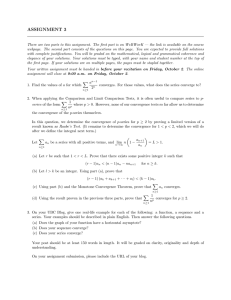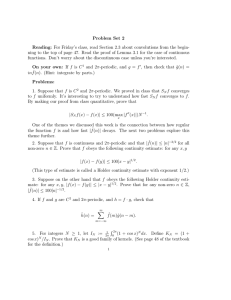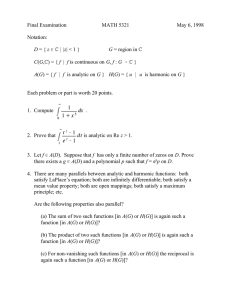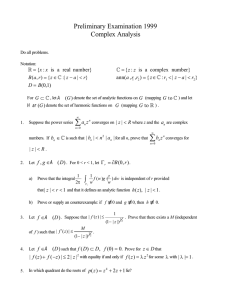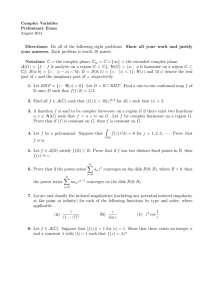Preliminary Exam
advertisement
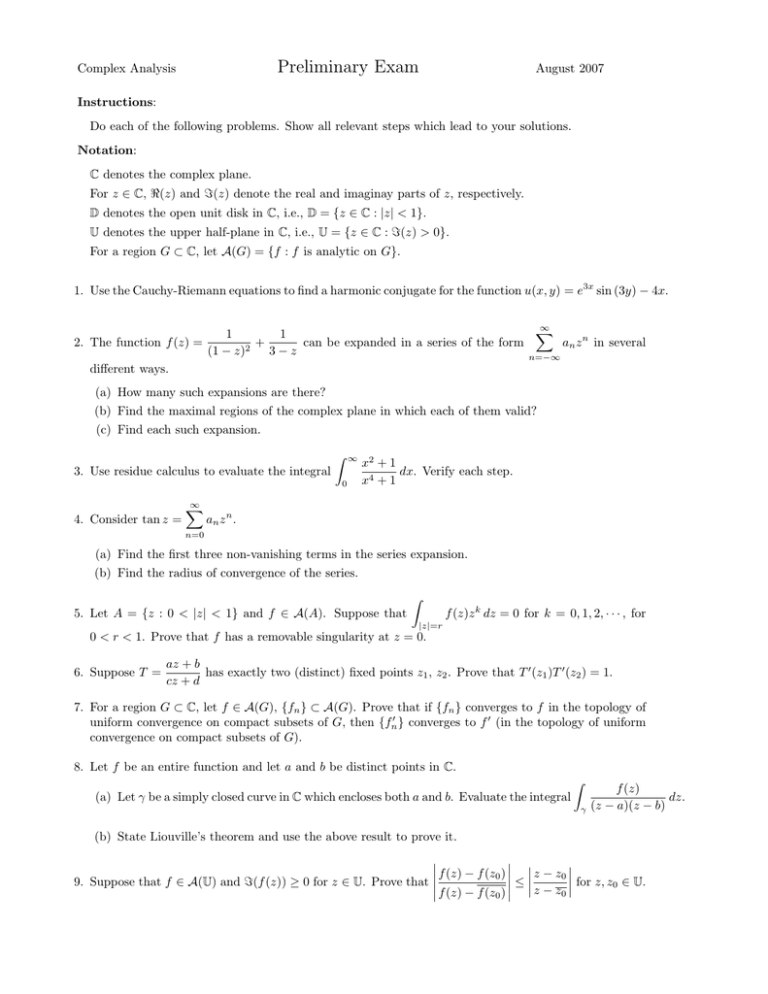
Preliminary Exam
Complex Analysis
August 2007
Instructions:
Do each of the following problems. Show all relevant steps which lead to your solutions.
Notation:
C denotes the complex plane.
For z ∈ C, <(z) and =(z) denote the real and imaginay parts of z, respectively.
D denotes the open unit disk in C, i.e., D = {z ∈ C : |z| < 1}.
U denotes the upper half-plane in C, i.e., U = {z ∈ C : =(z) > 0}.
For a region G ⊂ C, let A(G) = {f : f is analytic on G}.
1. Use the Cauchy-Riemann equations to find a harmonic conjugate for the function u(x, y) = e3x sin (3y) − 4x.
∞
X
1
1
+
can be expanded in a series of the form
an z n in several
2. The function f (z) =
(1 − z)2
3−z
n=−∞
different ways.
(a) How many such expansions are there?
(b) Find the maximal regions of the complex plane in which each of them valid?
(c) Find each such expansion.
Z
3. Use residue calculus to evaluate the integral
0
4. Consider tan z =
∞
X
∞
x2 + 1
dx. Verify each step.
x4 + 1
an z n .
n=0
(a) Find the first three non-vanishing terms in the series expansion.
(b) Find the radius of convergence of the series.
Z
5. Let A = {z : 0 < |z| < 1} and f ∈ A(A). Suppose that
f (z)z k dz = 0 for k = 0, 1, 2, · · · , for
|z|=r
0 < r < 1. Prove that f has a removable singularity at z = 0.
6. Suppose T =
az + b
has exactly two (distinct) fixed points z1 , z2 . Prove that T 0 (z1 )T 0 (z2 ) = 1.
cz + d
7. For a region G ⊂ C, let f ∈ A(G), {fn } ⊂ A(G). Prove that if {fn } converges to f in the topology of
uniform convergence on compact subsets of G, then {fn0 } converges to f 0 (in the topology of uniform
convergence on compact subsets of G).
8. Let f be an entire function and let a and b be distinct points in C.
Z
(a) Let γ be a simply closed curve in C which encloses both a and b. Evaluate the integral
γ
f (z)
dz.
(z − a)(z − b)
(b) State Liouville’s theorem and use the above result to prove it.
f (z) − f (z ) z − z 0 0
9. Suppose that f ∈ A(U) and =(f (z)) ≥ 0 for z ∈ U. Prove that for z, z0 ∈ U.
≤
f (z) − f (z0 ) z − z0
